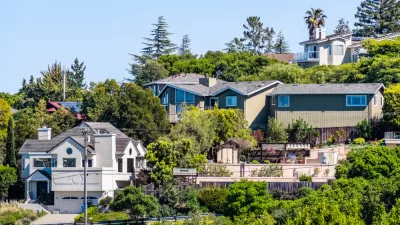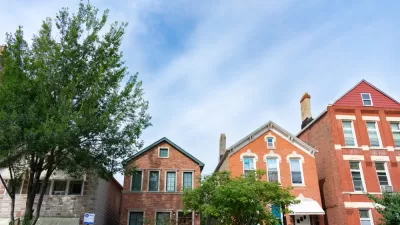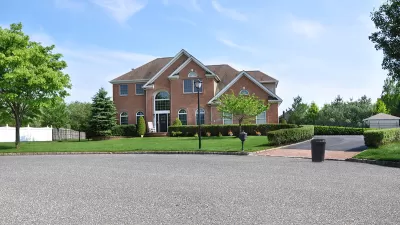Redwood City, located on the San Francisco Peninsula, will make it harder to build homes that take up more than 45 percent of a residential lot.

"As more developers raze starter homes to build extravagant monster homes in Redwood City, the City Council has escalated its approach to protecting the city’s landscape and its diversity," reports Maggie Angst.
"Redwood City Council on Monday night voted unanimously to add a layer to the city’s permit approval process by requiring that new homes that cover 45 percent of a lot or are 3,000 square feet or more go before the planning commission for review," adds Angst.
The change represents a layer of discretionary approval usually required of multi-family residential, rather than single-family residential developments.
Still, the argument in favor of the discretionary review of large single-family projects is motivated by a similar concern for the character of the surrounding neighborhood, and the context created by existing residential buildings in the area. "Several proposed projects and homes built by developers recently have caused an uproar among some residents who complain that the new projects lack compatibility with existing neighborhoods and are making it more difficult for young families to live in the city," according to Angst.
The City Council decided against a proposal by the Redwood City Planning Commission to adjust its zoning code and residential design guidelines to limit residences to 40 percent coverage of the lot area or a maximum size of 2,500 square feet.
The story about Redwood City preventing homes from getting too large in residential neighborhoods also contrasts the story of a plan in a New York City neighborhood that would allow single-family residences to be built larger.
FULL STORY: Redwood City tries to stop developers building ‘monster homes’ for maximum profit

Maui's Vacation Rental Debate Turns Ugly
Verbal attacks, misinformation campaigns and fistfights plague a high-stakes debate to convert thousands of vacation rentals into long-term housing.

Planetizen Federal Action Tracker
A weekly monitor of how Trump’s orders and actions are impacting planners and planning in America.

San Francisco Suspends Traffic Calming Amidst Record Deaths
Citing “a challenging fiscal landscape,” the city will cease the program on the heels of 42 traffic deaths, including 24 pedestrians.

Adaptive Reuse Will Create Housing in a Suburban Texas Strip Mall
A developer is reimagining a strip mall property as a mixed-use complex with housing and retail.

Study: Anti-Homelessness Laws Don’t Work
Research shows that punitive measures that criminalized unhoused people don’t help reduce homelessness.

In U.S., Urban Gondolas Face Uphill Battle
Cities in Latin America and Europe have embraced aerial transitways — AKA gondolas — as sustainable, convenient urban transport, especially in tricky geographies. American cities have yet to catch up.
Urban Design for Planners 1: Software Tools
This six-course series explores essential urban design concepts using open source software and equips planners with the tools they need to participate fully in the urban design process.
Planning for Universal Design
Learn the tools for implementing Universal Design in planning regulations.
Heyer Gruel & Associates PA
JM Goldson LLC
Custer County Colorado
City of Camden Redevelopment Agency
City of Astoria
Transportation Research & Education Center (TREC) at Portland State University
Jefferson Parish Government
Camden Redevelopment Agency
City of Claremont





























